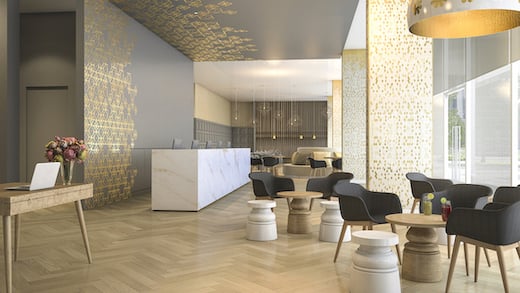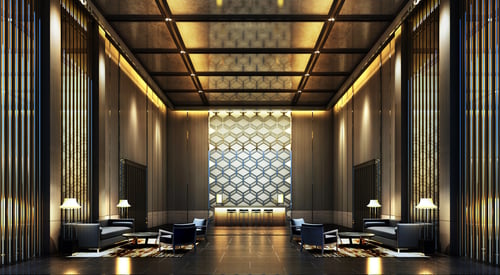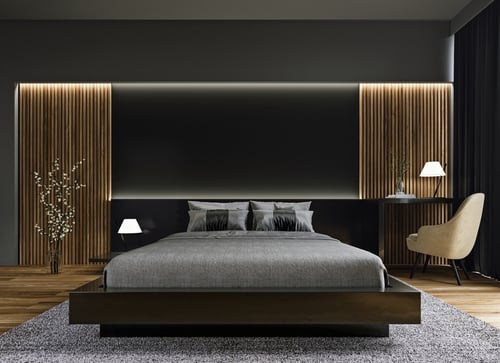
The evolution of hotel interior design: hospitality of the future
The entire hospitality industry, after experiencing dark times due to the forced closures imposed by Covid-19, is looking ahead to a new concept of hôtellerie. The sector's players are moving towards hospitality models that focus on innovation in interior design to improve the quality of the guest experience.
Comfort, multi-functionality and sustainability are the keywords for the design hotels of the future, to be taken into account when designing furnishings and equipment for the hospitality sector. This was also discussed at the 42nd edition of HostMilano, dedicated to innovations in the world of hospitality and the HoReCa sector. The hospitality industry offers flexible and aesthetic solutions for hotel design. These hotels, following current trends, want to create a unique and attractive atmosphere for their guests.
But what are the key trends in the industry? Read more about them in this article.
Click on the button below and download the free infographic to discover the latest design trends for applications in the catering and hospitality industry.
Design hotels: transformations in recent years
The hospitality industry has changed considerably in recent years and has evolved in response to new travel patterns and renewed customer needs. The Covid-19 pandemic has undoubtedly had a major impact on the changes in the sector: challenges have emerged that have led to innovations in the services, spaces and accommodation offered by hotels.
The modern traveller is increasingly looking for comfortable hotels that guarantee high safety standards.
This has led to the emergence of new hospitality formats designed for business travellers and digital nomads looking for hybrid spaces that offer a mix of innovative services and functions beyond a single overnight stay. These formats include new types of rooms that are larger, well-lit and equipped with smart technology devices with touchless controls for comfortable smart working. In this context, a design that fulfils new aesthetic and functional requirements is emerging.
Careful attention must be paid to services and furnishings, through design hotels that combine and blend style, technology and comfort. All this with a view to intercepting a group of younger consumers who are attentive to details and demanding about the functionality of spaces.

Interior design in hotels: emerging trends
The hospitality of the future includes new room types and larger shared areas, whose common denominator is aesthetically beautiful design furniture that contributes to an emotional travel experience. The minimalist approach is emerging as the dominant trend in hotel interior design: an aspect that cuts across the emerging trends of multifunctionality, technology, personalisation and sustainability.
1. Multifunctionality
One of the trends involves the use of renovated and rethought common areas to make them more welcoming with a view to multifunctionality. This is how the halls are transformed, with a skilful use of furnishings and lighting, into working environments with large tables, comfortable chairs and specially designed lamps. And again, the restaurant area and the lounge blend to create multifunctional spaces, which dialogue with each other through refined and essential design furnishings.
2. Technology
Technological aspects also triumph among the furnishings of the hotels: from smart switches, which make it possible to manage and dim the lights in the room, to apps for managing the air conditioning and heating systems, innovative air purification systems and tablets for room service. The technology, integrated into the devices present in the hotel rooms, offers the guest more control and convenience for a high level of comfort.

3. Personalisation
In this phase of tailor-made hospitality, hotel interior design takes the form of adjustable devices that personalise the traveller's stay. One example is circadian rhythm dimmers, which contribute to the guest's psycho-physical well-being. Italian companies, world leaders in customisation, will have to respond to this trend, trying to propose tailor-made solutions that support and enhance the preferences of travellers.
4. Sustainability
Green design furniture solutions are offered to an increasingly environmentally conscious public. Many establishments have already introduced energy-saving measures with this in mind: motion sensors, sensors for automatic water shut-off and the use of energy-saving LED sources.
To sum all this up, the hotel of the future requires design projects with a strong personality, which are essential for the renewal of the hospitality system.
At SLIM, we work with the industry to develop customised lighting projects and lighting components that can be integrated into design solutions for the hospitality industry. One example is the collaboration with Bticino for the development of Living Now, the latest generation of natively connected plates, with an attractive design and innovative shape and finish, ideal for design hotel rooms. We contributed to the definition of this product through the development of the backlighting of the inverters.
If you would like to receive more information on the development of customised lighting solutions, please click on the button below and feel free to contact us.
